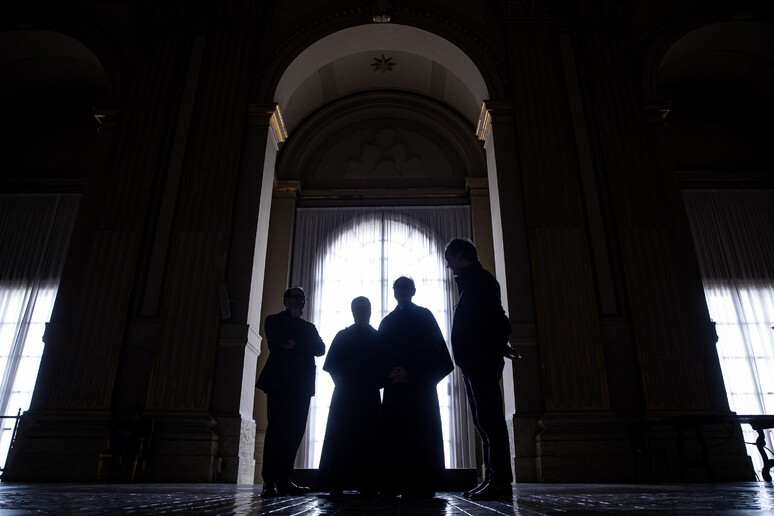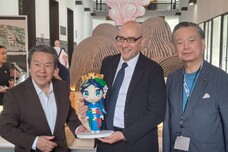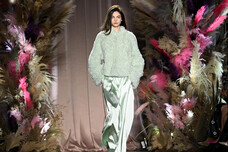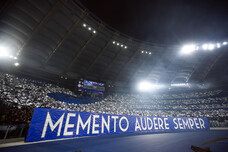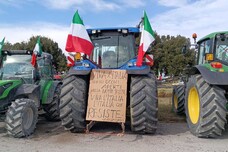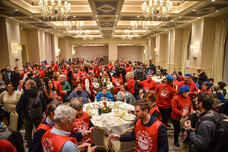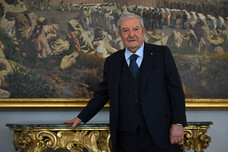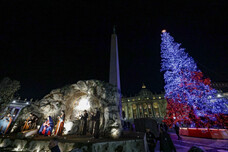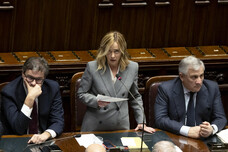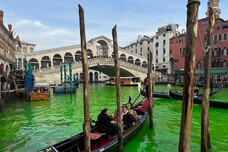The conclave, that is, the procedure
for electing the Roman Pontiff, is regulated by the Apostolic
Constitution "Universi Dominici Gregis", issued by John Paul II
in 1996 and modified by Benedict XVI in 2013.
The cardinals who have not yet turned 80 elect the pope.
The age limit was set in '96.
Before the conclave, the cardinals meet in the General
Congregations: these are preparatory meetings in which the
prelates express their opinions on the main problems of the
church.
The last General Congregation took place Tuesday morning and the
cardinals will be sequestered at Casa Santa Marta Tuesday night
ahead of the first vote Wednesday afternoon.
Before and during the conclave, the prelates are housed in Santa
Marta, the hotel-residence commissioned by John Paul II in 2005.
There is more than a kilometer between Santa Marta and the
Sistine Chapel, where the voting takes place, with the travel
served by shuttles.
The personnel who work in Santa Marta and the Sistine Chapel
must swear to secrecy about everything they see and hear, under
penalty of excommunication.
Before the conclave, the cardinals celebrate the "Missa Pro
Eligendo Romano Pontifice" in St. Peter's, then go in procession
to the Sistine Chapel.
Here the cardinal dean (this year it is Vatican Secretary of
State Pietro Parolin) pronounces the oath for everyone.
Then the master of liturgical celebrations, Archbishop Diego
Ravelli, orders the "extra omnes", (everyone out) making
outsiders leave.
For the entire duration of the conclave, the cardinals cannot
communicate in any way with the outside world, and cannot even
read newspapers or watch TV.
A conclave lasts on average from two to five days.
Voting is by secret ballot, on a paper ballot.
On the first day there is one vote, on the following days two in
the morning and two in the afternoon. To elect the pope, the
votes of two-thirds of the electors present and voting are
needed.
Only one name must be written on the ballot, otherwise it is
invalid.
If a two-thirds majority is not reached, the ballots are punched
and tied with a ribbon. Twice a day, in the morning and in the
afternoon, they are burned in the stove installed in the Sistine
Chapel, with a dye that produces black smoke (potassium
perchlorate, anthracene and sulfur).
If the candidate receives at least two-thirds of the
preferences, the dean asks him in Latin "do you accept your
election, canonically occurred, as Supreme Pontiff".
When the answer is affirmative, the dean asks, again in Latin,
"by what name do you wish to be called?"
The elected candidate responds "Vocabor" (I will be called) and
the name, with the relative number if applicable (e.g Francis
II, which the British bookies are betting on).
After the new pope's acceptance, the ballots are burned in the
stove with a dye that produces white smoke (potassium chlorate,
lactose and rosin).
In the meantime, the new heir to St Peter retires to the
sacristy of the Sistine Chapel, called the "Room of Tears",
because there the newly elected popes often give in to emotion.
Here he finds three white cassocks of different sizes, and puts
on the one that best fits him.
After dressing, the pope sits on the chair of the Sistine
Chapel, reads a passage from the Gospel of Matthew on the
Petrine magisterium, and receives the homage of the cardinals.
Then, the cardinal protodeacon (Dominique Mamberti) appears on
the central loggia of St. Peter's and pronounces the "habemus
papam", with the name of the newly elected leader of the world's
1.4 billion Catholics.
Immediately afterward, the pontiff appears on the loggia and
imparts the blessing Urbi et Orbi (to Rome and to the world).
ALL RIGHTS RESERVED © Copyright ANSA
